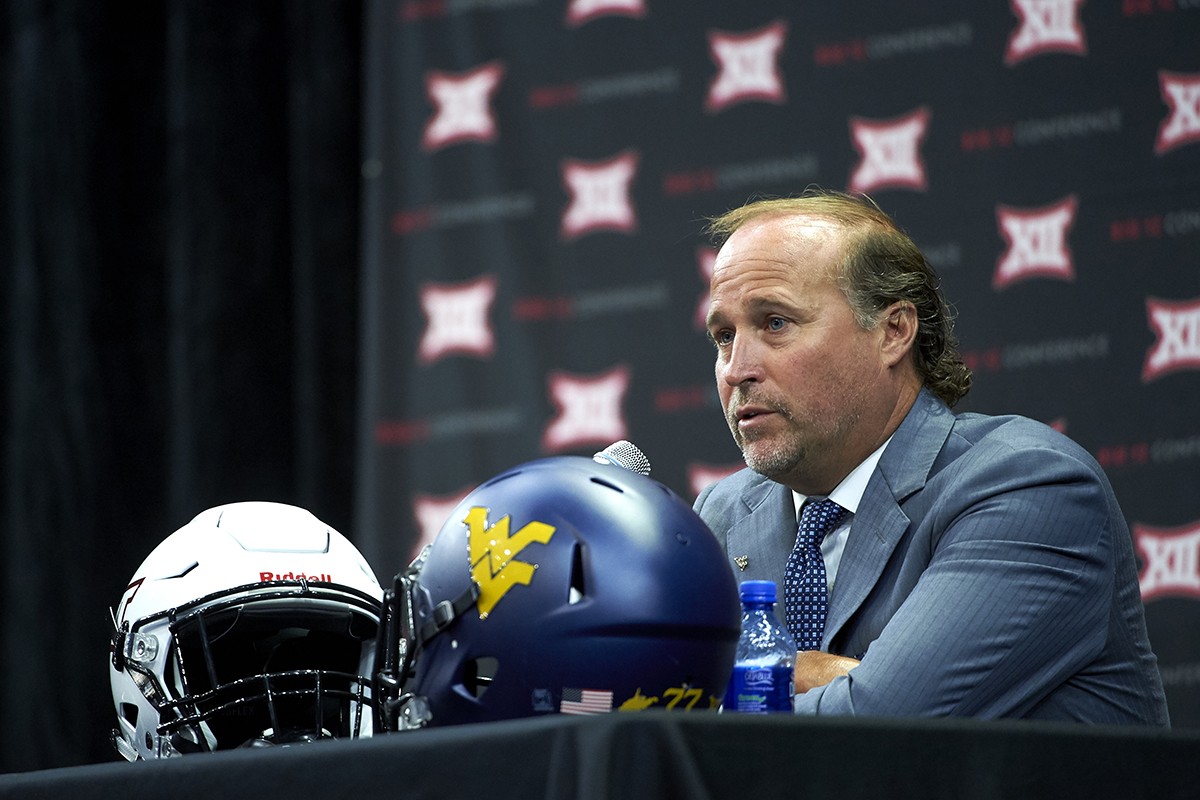MORGANTOWN — Curiously inserted into his recent summation of a good-on-good scrimmage was coach Dana Holgorsen’s emphasis on flags.
Or rather, the lack of them. 
Among the most-penalized teams in the Big 12 over the past four seasons, West Virginia needs to clean up its act. Sometimes the problem has been over-aggression, like the flurry of personal fouls in 2016 that helped Oklahoma build a 34-point first-half lead. Most flags, however, arise from players panicking because they’re caught out-of-position.
In 2017 the Mountaineers averaged 59.7 penalty yards per game, third-most in the conference. Nationwide, only 33 of the 129 FBS teams sacrificed more yardage.
“Last year, I felt like we were a little reckless and that our technique was not quite what it needed to be,” Holgorsen said.
Some examples:
- Late in the third quarter of a 31-24 loss to Virginia Tech, West Virginia converted a third-and-1 at the Hokies’ 23 only to see the first down nullified by a holding call on left tackle Yodny Cajuste. Moments later, the Big Ten side judge flagged Holgorsen for unsportsmanlike conduct, and WVU squandered a crucial scoring chance.
- Trailing Oklahoma State by six points in the fourth quarter, WVU’s defense gave the Cowboys new life on a third-and-11 pass interference flag against Hakeem Bailey. OSU scored soon after and won 50-39.
- Four defensive personal fouls (two on Corey Winfield) factored into three Baylor touchdowns, though WVU escaped Waco with a 38-36 win.
- The 30-14 Heart of Dallas Bowl loss featured Elijah Battle’s pass-interference flag that prefaced a Utah touchdown.
“A lot of penalties come from being lazy,” defensive coordinator Tony Gibson said. “Your guys are either loafing or not in position to make a play, so the first thing do is grab. We don’t want lazy or undisciplined people in our program.”
By emphasizing discipline and effort, coaches are aiming to alter a trend. Along with last season’s unacceptable total, WVU also was the third-most flagged team in Big 12 play during 2016 (63.3 yards) and 2015 (70 yards) and 2014 (58.2 yards).
Holgorsen recognizes “penalties are never going to be 100-percent avoidable,” but he reminds his team how damaging penalties were last year, and how important they can be in a game of tight margins.
One flag Holgorsen and West Virginia fans will never forgive was the offensive pass-interference call against David Sills at TCU — a flag that came despite cornerback Tony James yanking Sills’ jersey on the catch.
But before conspiracy theories take rise over calls going against the Big 12’s geographic outsider, take in this factoid: West Virginia’s opponents have been penalized heavily also. During 2014 and 2016, the Mountaineers led the league in opponents’ penalty yardage. During 2015 and 2017, WVU’s opposition suffered the third-highest penalty yields.
Whatever creates that four-year intersection of flag-heavy football, Holgorsen wants to see his team at least minimize its mistakes.
That’s why he gave the officiating crew “the green light” at the latest scrimmage.
“They were free to throw flags, and there weren’t a whole lot of flags being thrown,” Holgorsen said. “That’s always encouraging.”




